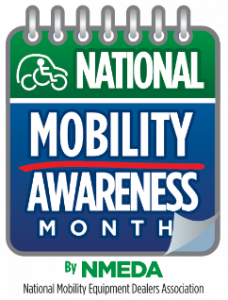
Find Your
Fit.
J.B. Seiner’s life changed forever during his sophomore year at Florida State University when he got into a motorcycle accident which left him with a spinal cord injury. For years, he relied on his mother to drive him around Jacksonville as he worked on rehabilitation and finished his college studies. However, today, he is driving his second adaptive vehicle, and living a full and complete life.
J.B. graduated from the University of North Florida in 2012 and has worked in outside sales for a medical device company for the past eight years. But that’s not all. Seiner has a passion for wheelchair rugby, which he began playing after the accident. He admits that he wasn’t interested in it at first, but it turned out to be one of the best things for his recovery and rehab, and he hasn’t missed any rugby events in the past 12 years.
Wheelchair rugby also brought him his soon-to-be-wife, Katie, whom he met through his rugby coach. J.B. credits the accessible vehicle with allowing him to pursue his passions and live life on his terms. “I couldn’t do what I’m doing now without this vehicle,” he says. J.B.’s story is a testament to the importance of accessibility and how it can transform lives.
When Mayneida Nellum suffered her spinal cord injury during a horrific automobile crash, she was just starting out as a young adult. She was working two jobs and had saved up enough money to get her first apartment, where she lived for eight months.
But at 24 years old, that was taken from her in the accident. She moved back in with her family and started a life completely different than what she was expecting. She longed for independence but was completely dependent on others.
“When you have to go do just one thing and you have to set up the entire day because of how time-consuming it is to just spend your time waiting hours for a van,” Nellum says. “The accident shut my life down. I basically became the family babysitter because I just stayed home.”
In 2020, nearly two decades after her injury, she was able to find a vehicle through Mobility of Denver, a Toyota Odyssey with a lift for her wheelchair and the ability to drive without transferring, with monthly payments that she was surprised she could afford.
Sarah Metsch is a true inspiration, a fighter for her entire life, showcasing how individuals can overcome just about anything.
She was born with Spina Bifida and had more than 80 surgeries between the ages of seven and 28. In high school, her senior class project centered around choosing to amputate her leg due to continued complications. She became a local celebrity after a news crew followed her amputation decision because of the disease and, in 2015, she broke her spine in a domestic violence incident.
For the next nine years, she remained isolated, in bed, and depended on caregivers – until she was able to gain access to a vehicle that could accommodate her wheelchair without transferring. It was originally designed for a little girl who died young. Sarah keeps the stickers put on the vehicle by that girl to honor her memory.
The accessible vehicle, a 2015 Toyota Sienna, saved her life.
“I’m doing so well and I can directly attribute it to having the van and being able to live my life again,” Metsch says. “I’m not tethered to a caregiver to drive me everywhere. The vehicle allowed me to reconnect with my communities and my work, rather than sit at my computer in isolation, as I did for years.”
Today, Metsch spends her time advocating for and working with people with cross-disabilities today.
She still remembers the first time she was able to drive.
“There’s a stretch where the highway rounds around University Blvd. and the Rocky Mountains appeared out of nowhere, like a Bob Ross painting with bright blue skies, gorgeous mountains, and happy little clouds, a painting just for me,” she says. “I was sobbing, holding on so tight to the steering wheel, thinking how amazing it was, and I could not believe I was driving again.”
When Julia Bonamassa played youth soccer and softball at 10 years old, she started falling down a lot and began having trouble running. A few months later, her identical twin sister, Jessica, started experiencing the same thing.
“When Julia was running in soccer, her leg started to give out and collapse. We all thought it was a growth spurt,” Jessica says. “We were very active, playing soccer and softball and in the outdoor world, kayaking, riding quads and shooting.”
Unfortunately, it wasn’t a growth spurt. The young twins from Berlin, New Jersey were diagnosed with FHSD, a form of muscular dystrophy. This is a progressively deteriorating muscle disease, which has no cure or treatment to prevent progression.
Today, they live independent lives because of the assistance of their wheelchair accessible vehicle.
Julia says. “Our mom would drive us everywhere – she was so selfless, but it was like we were a burden. When we got our first van last year, it was the first sense of normalcy we felt in years because we didn’t have to rely on anyone and could be completely independent.”
A decade after those first symptoms started, the twins are going to separate schools for the first time in their lives. Julia is attending Rutgers University in Camden, NJ and Jessica is attending Rowan University in NJ both as juniors.
“Today, we can just drive,” Julia says. “It’s just amazing and a blessing because when I get in the car, I don’t need to worry about struggling.”
Jack Losco, Jr. is a kind and caring teacher, son, brother, and friend to all who know him. Beyond that, he’s always had a taste for adventure and was destined to live a life that satisfied his desire to get out and explore. However, during his second year of Forestry and Smoke Jumping school at the University of Montana in Missoula, Jack went part way through the windshield in a car accident that resulted in partial paralysis. That was 35 years ago.
After his rehabilitation, he was soon back behind the wheel driving a modified six-wheel amphibious ARGO. It took him hunting and gave him the tools to get back to work on the farm. To get back outside.
As a C5 quad, driver training did not come easily, but he passed the road test on his second try before finishing rehab. In 1999, he moved south to teach at a brand new fully accessible public school in a district east of Raleigh, North Carolina. He has now been teaching there for nearly 24 years.
While his daily driver, a Dodge Grand Caravan which he operates from his power chair with an EZ Lock is special, it is his Jeep that gives him outdoor freedom. And how does he drive the Jeep? His driving controls, and seating system, more closely resemble a fighter jet than an off-road machine. The Jeep is equipped with dual joysticks linked to an EMC AEVIT 2.0 system.
And for Jack, the teacher and the off roader, being mobile is at the center of it all.
“For me, mobility is synergistic, the sum is much greater than the addition of the individual parts,” Jack shares. “It is more than just getting to a destination; it is therapeutic.”
Let’s turn back the clock back to the 1960s. Meet John Bollinger, a young Navy Ensign. John received his officer commission in June 1969 and began serving in the US Navy aboard LST 1163, USS Waldo County, in Panama.
A short six months later, a spinal cord injury sustained in a diving accident changed everything. John became a C6,7 quadriplegic. He returned to the States, was discharged from the Navy, sold his 1963 Austin Healy 3000, and went to work for the VA where he worked in a cubicle for 16 years.
After a meeting with longtime Paralyzed Veterans of America (PVA) Executive Director, Gordon Mansfield, John joined the organization in 1987, first as Associate Legislative Director then Director of National Advocacy and finally as Deputy Executive Director. For more than three decades of frequent travels for the PVA, having a car was essential, and he eventually traded his two-door car preference for a minivan with the powerchair he needed. Eventually he installed an EZ Lock system with Featherlite hand controls to drive from the chair to meet his physical needs.
In the spring of 2022, while driving his BraunAbility Sienna minivan, John was rear ended, and his van was totaled. The accident, during the height of Covid and supply line shortages, made finding a short-term replacement all but impossible. It took three months for him to get a Chrysler Town and Country but the 14” dropped floor was not ideal. He then owned a Dodge Caravan for a while.
He then purchased his current ride, a 2022 Honda Odyssey, through Mobility Works and he will tell anyone who asks that “Driving is one of the most important aspects of living. It never hit me until it was gone. Having access to a car is one of the most important aspects of life for the disabled.”
To help support National Mobility Awareness Month and the accessibility movement, we invite you to share your experiences, must-haves for equipment, and tools that help improve mobility on your social media channels. We want to hear from you.
Be sure to include #NMAM2025 and #FindYourFit in your posts
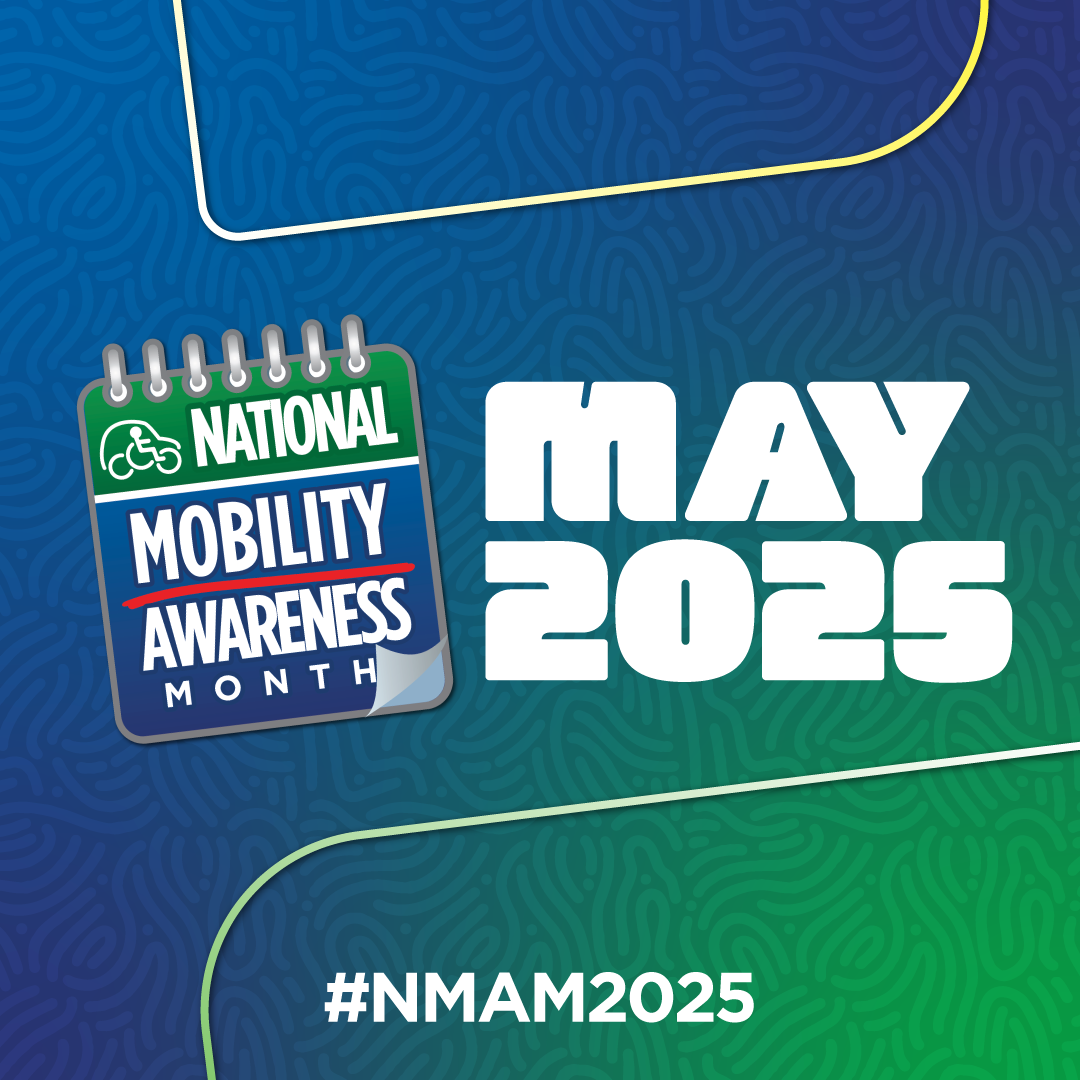
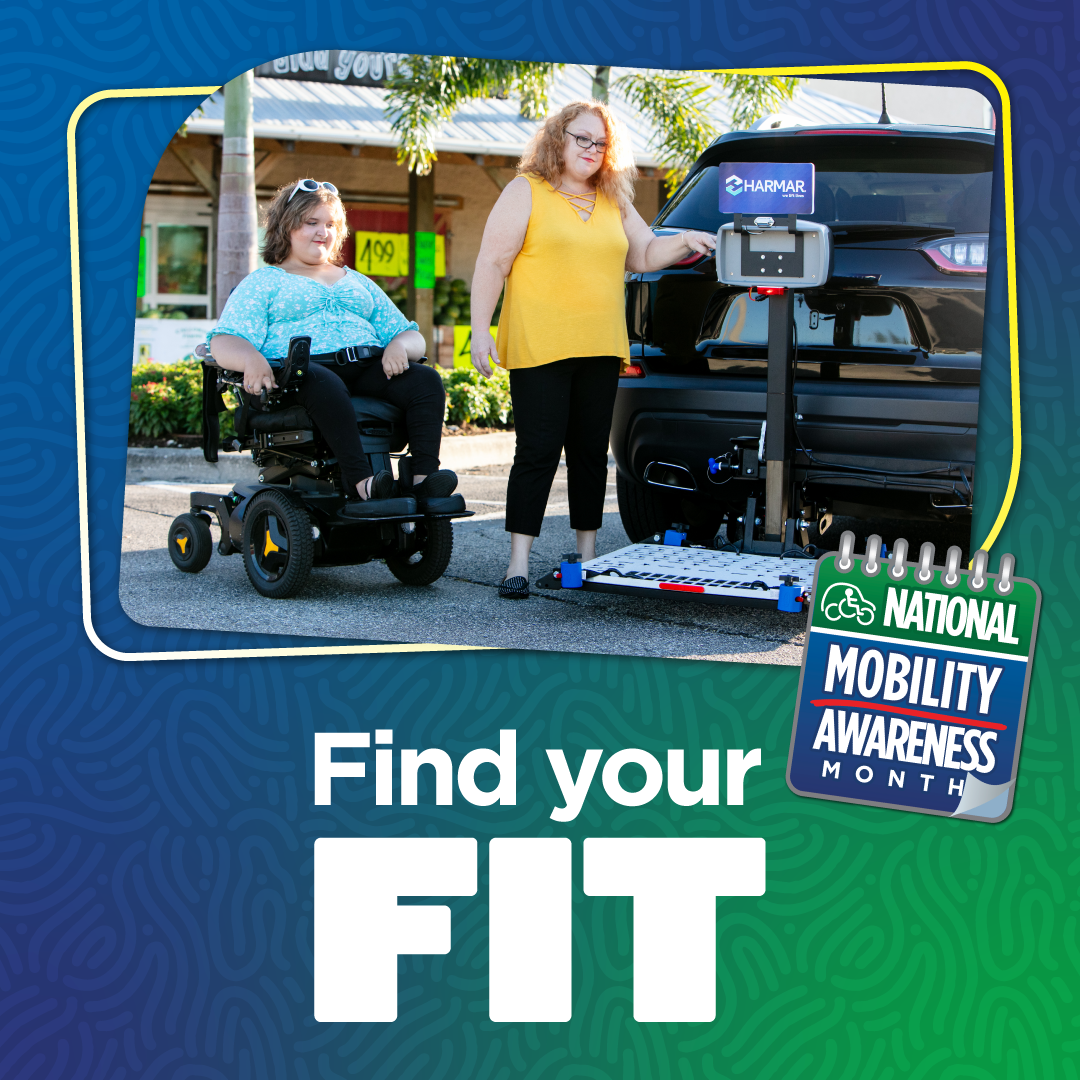
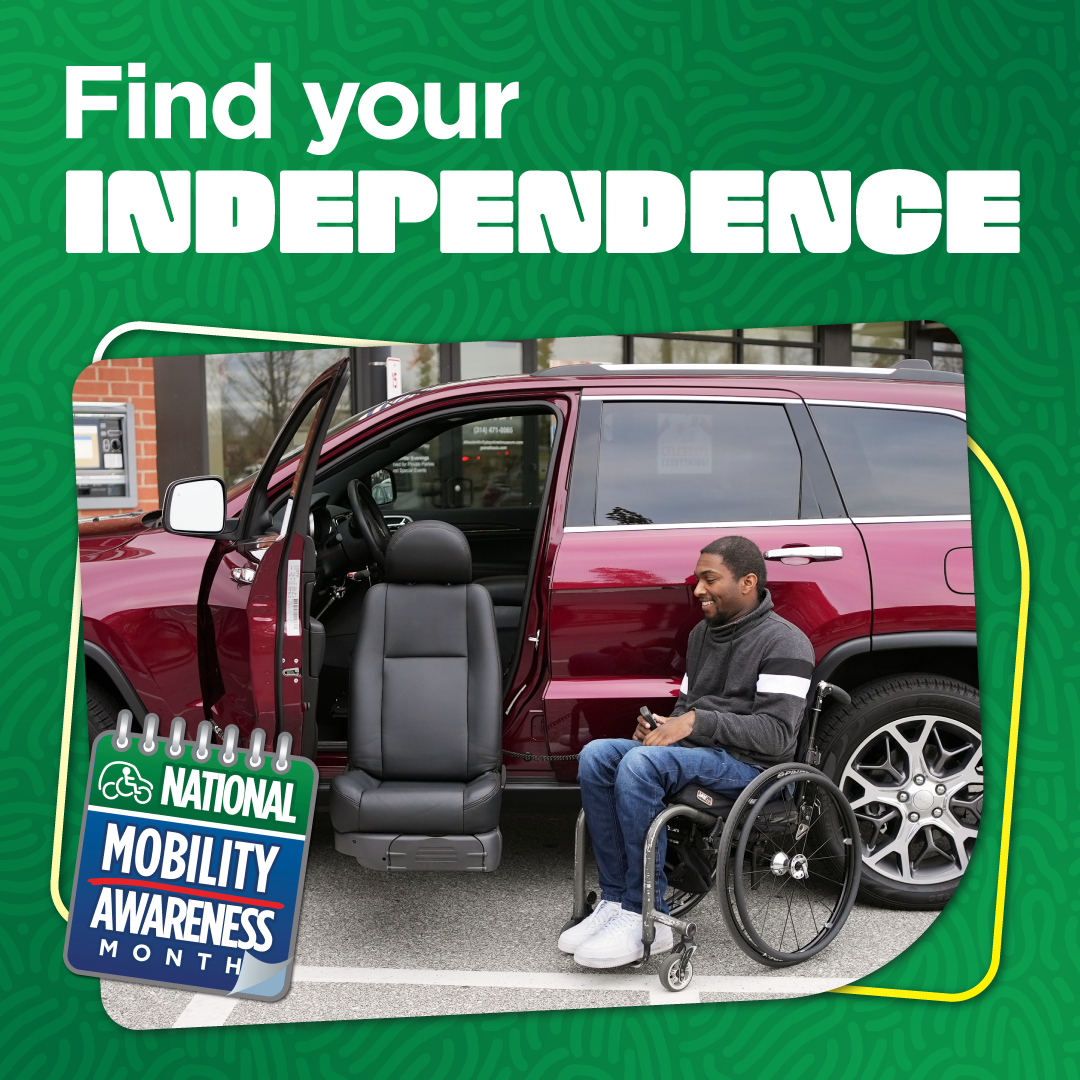
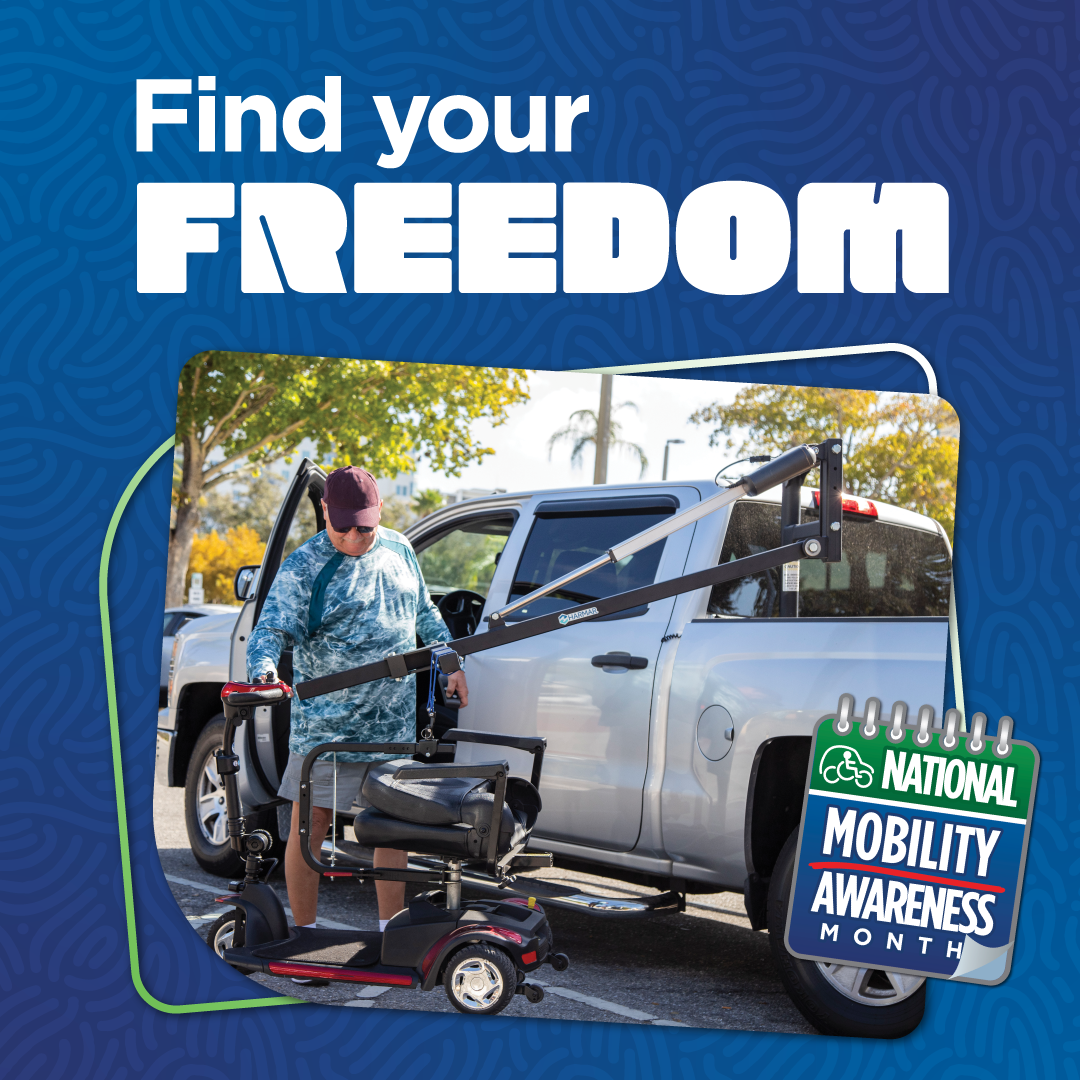
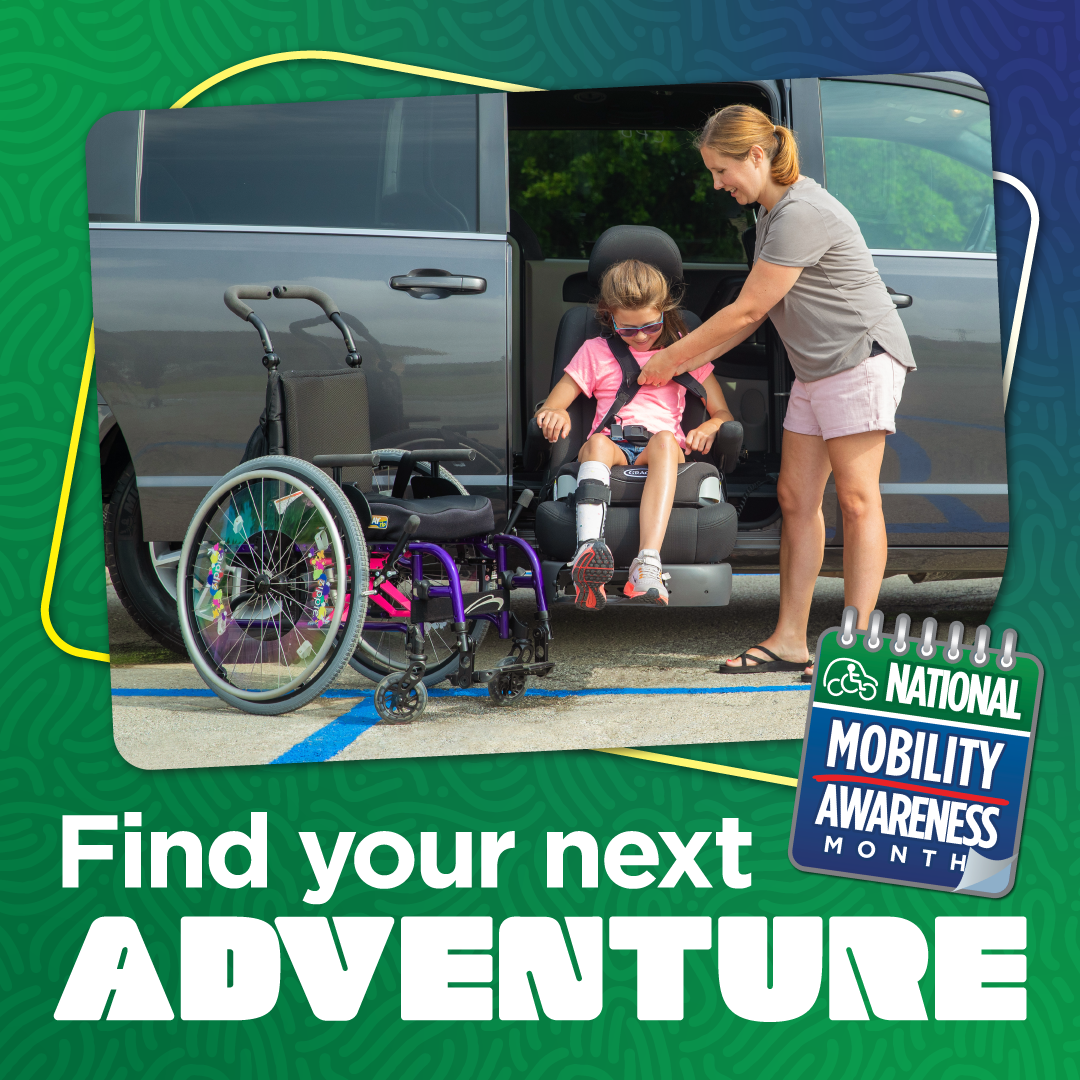
Learn more about how disabilities and mobility issues affect people all over North America. Download our National Mobility Awareness Month fact sheet.
Locate a NMEDA dealer near you.
Customized for you and your independence. Explore adaptive mobility options ranging from automatic wheelchair ramps to low- or zero-effort hand controls, personalized for your needs by Quality Assurance Program accredited NMEDA dealers.